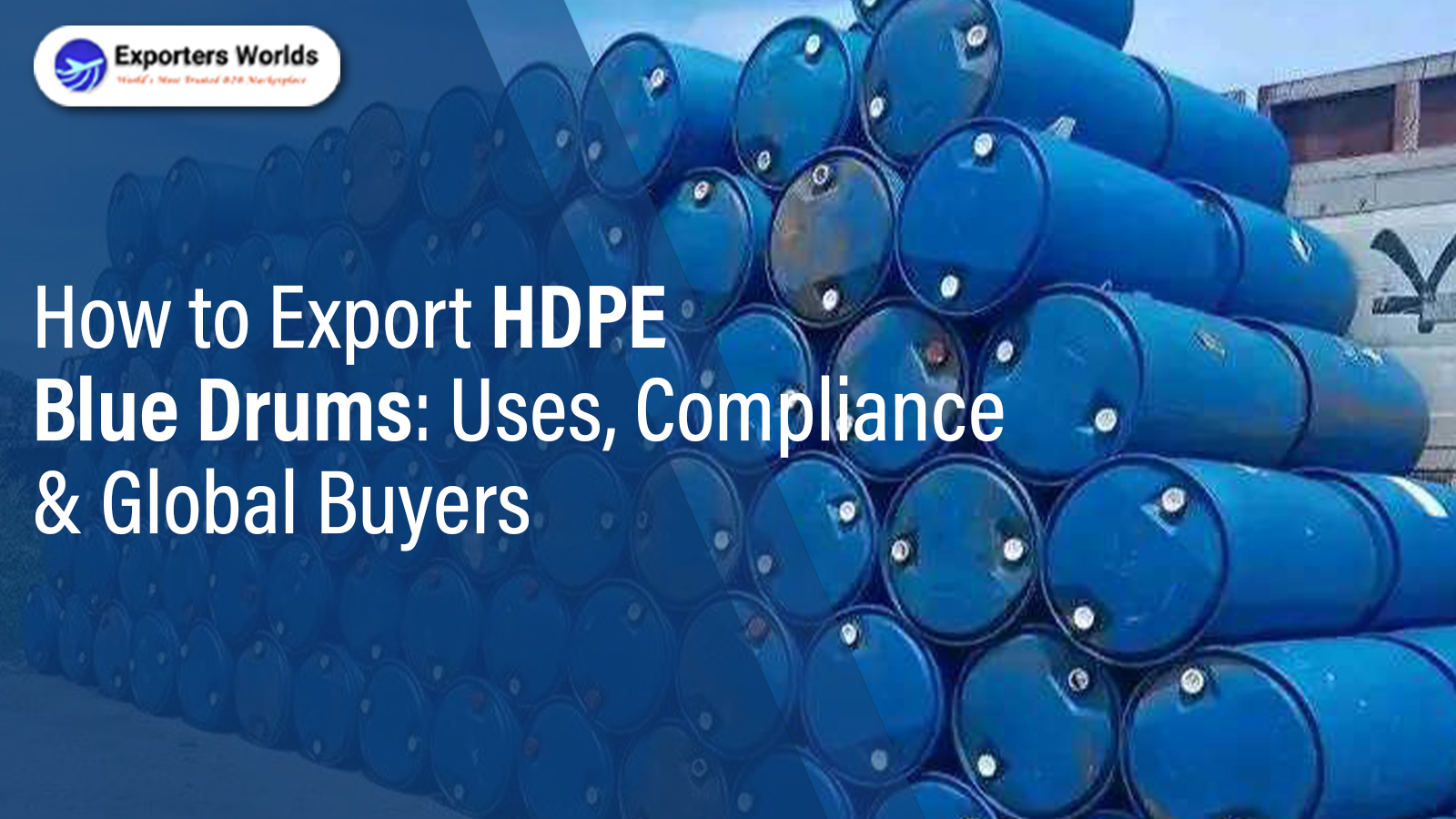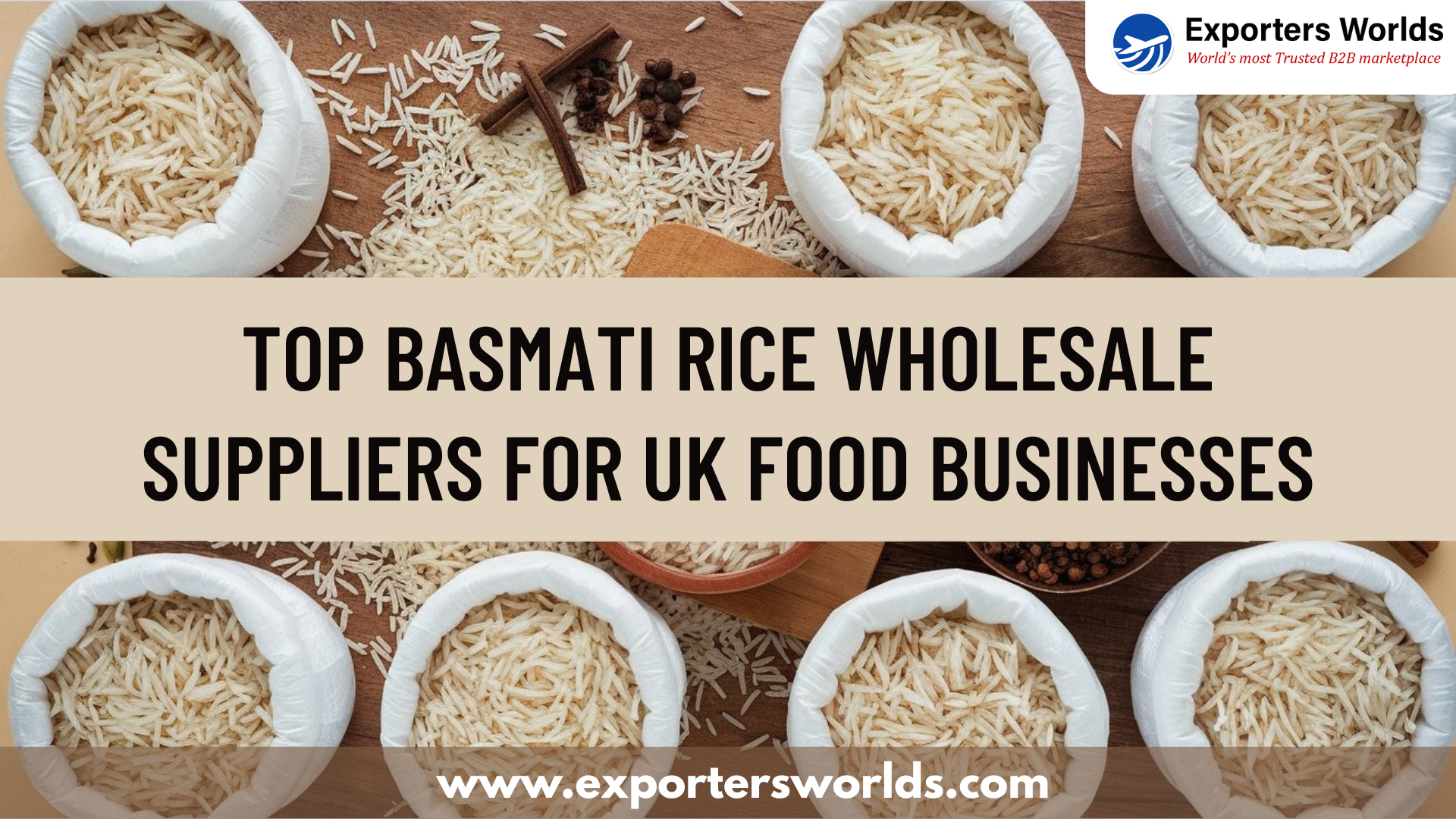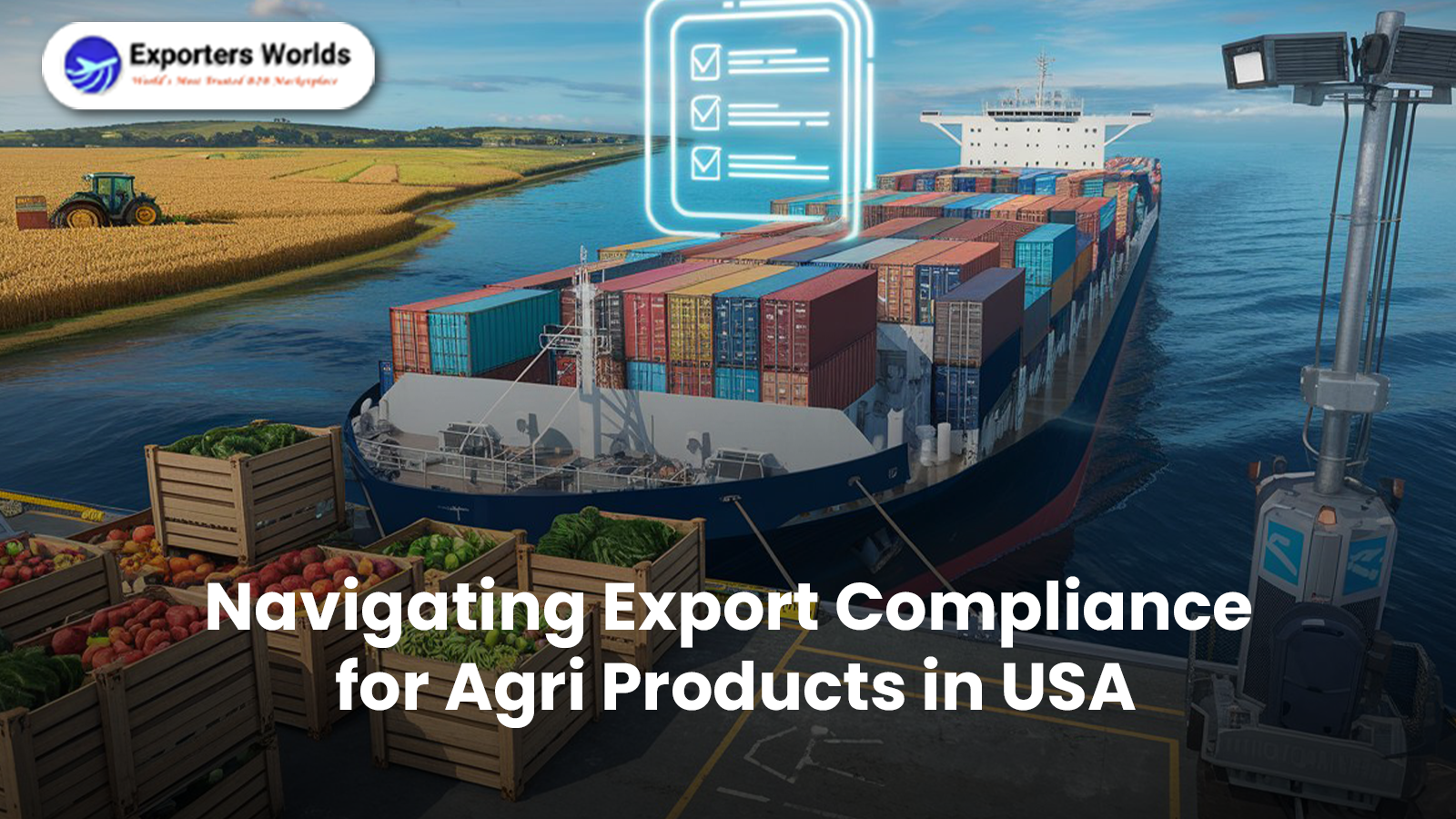How to Export HDPE Blue Drums- Uses, Compliance & Global Buyers - Exporters Worlds

Let’s Start Here…
There’s something oddly satisfying about seeing those tough, blue industrial drums stacked on pallets, ready to take on the world. They've got that solid, no-nonsense look, like they were made to do hard work. And truth is—they were.
Now, what’s interesting isn’t just what these drums carry—chemicals, oils, food concentrates, sometimes even just water—but where they’re headed. And how.
Because getting into HDPE drum export (yes, even when people type HPDE bule Drums by mistake) isn't as simple as it sounds. But it’s far from impossible—when you understand the nuances, play by the rules, and leverage the right platforms.
So, let’s break it down like we’re at the docks, boots on the ground, where the real trade starts.
What Exactly Are HDPE Blue Drums? (Yeah, HPDE Bule Drums too)
Let’s address the typo first. HPDE bule Drums—it pops up more than you'd think. Thousands of people every month type it that way. Why does it matter? Because if you’re trying to export HDPE barrels, your SEO strategy better speak their language—mistyped or not.
Now the actual product: HDPE blue drums are tough. They’re built to resist chemical reactions, sun exposure, and physical wear. They don’t crack under pressure (literally), making them perfect for transporting everything from hydrochloric acid to coconut oil.
The blue color? It’s not just cosmetic. It tells handlers and regulators, “Hey, this drum means business—likely industrial grade.”
You’ll find sizes like 210L and 220L dominating the HDPE barrel global market. Stackable, sealable, secure. That’s why international buyers—from oil industries in the UAE to food processors in Italy—hunt for them like hawks.
So... Who Uses These Drums, Really?
Every sector that matters.
Seriously, if it moves in bulk and needs protection, there’s an industrial plastic drum export market supporting it.
Industrial Chemicals
Acids, alkalis, solvents, detergents.
If it burns, corrodes, or reacts, HDPE drums contain it safely. Their non-reactive surfaces are often treated to meet UN guidelines for hazardous transport.
Food & Beverage
You’d be surprised how many food companies demand food-grade HDPE drums with zero history of chemical use.
Vegetable oil, syrup, glucose, even exotic juice concentrates get shipped in blue plastic drums. Here, FDA approval isn’t a bonus—it’s non-negotiable.
Recycling & Waste Management
Drums aren’t just about storing clean things. Sometimes, they hold the dirtiest stuff—e-waste fluid, toxic sludge, used motor oil.
But that’s part of the appeal. These drums aren’t one-time-use plastics. Many of them can be reconditioned up to 5 times without losing structural integrity. That’s powerful.
Oh, and some folks turn them into furniture. Seriously. There's a whole sub-industry turning used HDPE drums into chairs, animal feeders, floating docks, and water tanks.
Let’s Talk Compliance – Because the World Has Rules
When you’re exporting HDPE drums, the game isn’t just about cost and logistics—it’s about regulation.
A tiny oversight? That’s a customs nightmare. A label missing? Container rejected.
Global Quality Benchmarks
Let’s list them out:
-
UN Certification: Required for hazardous materials.
-
ISO 9001: Proves your product meets quality management standards.
-
REACH (EU): Especially for drums containing chemicals.
-
FDA Approval: Essential for food-contact variants.
Now here’s a cold fact:
More than 30% of reconditioned drum shipments to Europe are flagged or delayed due to poor documentation or inadequate reusability certificates. You don't want to be part of that statistic.
This is where HPDE drum compliance becomes non-negotiable. If your documents and product don’t match, there’s no shortcut through customs.
Country Specifics
Let’s get blunt.
-
USA/Canada: Environmental compliance is serious. Drums that held flammable or corrosive materials need EPA documentation.
-
Europe: CE marks and REACH paperwork must match. A missing declaration can cause a 7-day port delay.
-
Africa/Middle East: Markets like Nigeria and Egypt focus on reuse value. Here, drum recyclability certificates matter more than aesthetics.
How to Export HPDE Bule Drums (The Right Way)
Let’s assume you’ve got the inventory. Now comes the grind:
1. Clean Them Up (Or Not, If They’re New)
Used drums? Industrial-grade cleaning is a must. Think: steam, chemical flushes, residue checks. It’s not just for safety—it’s to win trust.
Every reconditioned drum must come with a Certificate of Reusability that shows it's been inspected for leaks, odor, and strength.
2. Documents That Seal the Deal
-
HS Code: Usually 3923.30
-
Certificate of Origin
-
Material Safety Data Sheet (MSDS) if applicable
-
UN Compliance Document for chemical containers
Skip one, and the container might just sit at port while penalties pile up.
3. Packaging Matters More Than You Think
Sure, they’re tough, but customs isn’t kind. Palletize. Shrink-wrap. Label visibly.
Use durable strapping that survives forklift handling.
When you export HDPE barrels, everything from the inner liner to the outer straps is inspected. Exporters Worlds provides complete packaging consultation, including climate-specific recommendations. Yep, even for monsoons in Bangladesh or snow-packed docks in Poland.
Where Are These Drums Headed?
The Big Buyers by Country
-
India – For paint, lube, and pharma storage
-
Nigeria – Agriculture, water storage, diesel transport
-
UAE & Saudi Arabia – Petrochemical and bulk packaging
-
Germany – Food-grade and environmental engineering
-
USA – High-volume packaging and chemical handling
Here’s a quick snapshot:
India imports over 2 million HDPE drums annually across multiple sectors, with recycled drums accounting for nearly 40% of that.
And How Do You Find These Buyers?
You could…
-
Spend hours on B2B platforms, chasing unverified leads
-
Or, take the shortcut with Exporters Worlds—where real, verified HDPE drum buyers are already looking for your product category.
We provide curated buyer connections, not just directory dumps.
Why Exporters Worlds? Because This Isn’t About Just ‘Exporting’
Here’s what we’ve learned—exporting is only 30% about the product. The other 70%? Compliance, packaging, buyer trust, freight strategy, post-sale follow-ups.
That’s where Exporters Worlds comes in.
Global Compliance? Covered.
From REACH to FDA to ISO, we help you navigate the red tape like a pro.
Real Buyer Access? Verified.
Forget fake emails and ghost buyers. We hand you verified leads—buyers who already import HPDE bule drums and are waiting for the right suppliers.
Custom Packaging & Documentation? Handled.
Whether it’s palletized shipments to Hamburg or labeled drums for Riyadh—we customize your HDPE blue drums export plan based on market regulations.
Final Thoughts: It’s Not Just About Drums. It’s About Doing It Right.
This isn’t some throwaway plastic we’re talking about. These drums carry risk, value, trust—and regulation.
Getting into the HDPE drum export business sounds simple. But the money? The real money is made by those who prepare properly and connect smartly.
With soaring demand, tighter scrutiny, and smarter buyers, now is the moment.
You bring the product.
Exporters Worlds brings the reach, compliance, and reputation.
Let’s get your drums moving—globally.
FAQs – Quickfire
Q: Can I export used HDPE drums?
Yes, if they’re cleaned, tested, and certified. Without a reusability certificate, most countries will block the shipment.
Q: What's the HS code for HDPE drums?
Generally 3923.30, but always verify with your export office.
Q: What’s the minimum quantity buyers look for?
Most verified buyers go for FCL (Full Container Load)—around 80–100 drums, depending on size.




